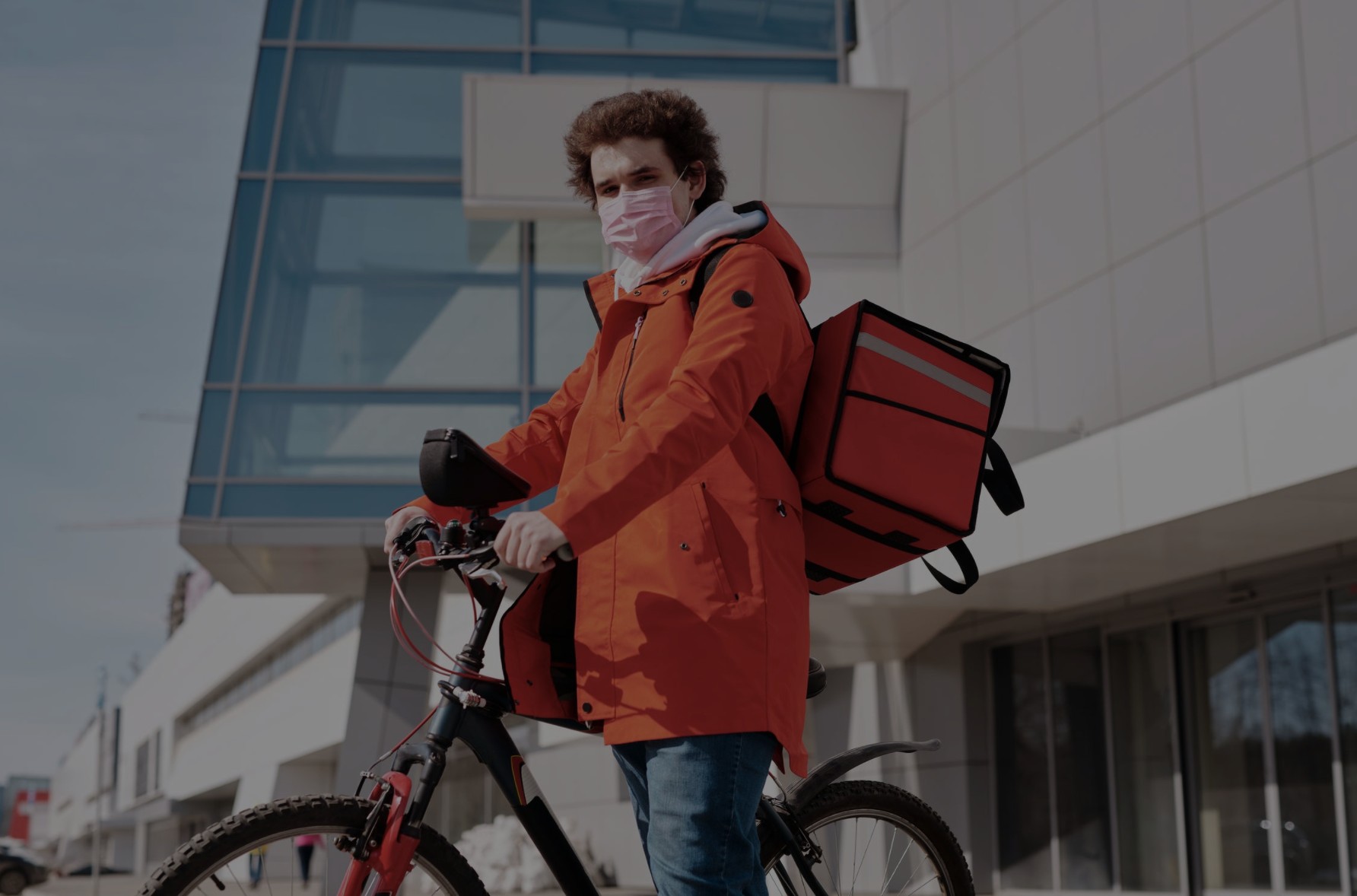Since Covid first made its appearance in countries around the world, there has been an explosion of new riders taking up bicycling, whether for exercise, recreation, or to avoid commuting on crowded public transportation.
This article is Part 2 in a series of bicycle safety articles for those riders who are new to bicycling, returning to bicycling, or are even experienced cyclists who would like a refresher on the basics of bicycle safety. In Part 1 of this article, we looked at protecting yourself (and your bike!) before you ride. This pre-ride safety information in Part 1 is an often overlooked but vitally important part of protecting yourself and your bike.
In this article (Part 2), we will look at how to protect yourself while on your ride. And in the next article, we will look at what happens if you are injured despite your best efforts to stay safe. Together, these 3 articles are a comprehensive primer on bicycle safety for bicyclists of all experience and skill levels.
When a mysterious new virus first emerged in Wuhan, China in December of 2019, the rest of the world was aware that there was a serious viral outbreak in Wuhan, but it wasn’t until early in 2020 that the virus had made the leap from local epidemic to global pandemic.
The rest is now history. Shelter in place, social distancing, masks, and disinfectants became the new normal. In businesses that remained open, employees often began working remotely. In businesses that closed while we waited out the viral storm, employees were often furloughed. Weeks turned to months, and people who suddenly had a lot of free time on their hands began looking for something more than bingeing on TV and snacks.
For many people around the world, that “something to do” became the bicycle. And so, unexpectedly, another great Bike Boom was born.
And for good reason. Want to avoid the close confines of public transportation in the midst of a pandemic? The bicycle helps you do that.
Want to save money in an economic downturn? The bicycle helps you do that.
Want to get some exercise, fresh air, and sunshine after sitting inside all day? The bicycle helps you do that.
Want to save the world? The bicycle helps you do that too (In the United States alone, there was a dramatic 10.3% drop in greenhouse gas emissions after the pandemic began. This is due largely to the drop in power generation and automobile trips, rather than a rise in more bicycling, but it shows the potential bicycles have to help reduce greenhouse emissions by replacing some automobile trips with bicycle trips. For people who want to reduce their own greenhouse emissions, the 1-Mile Solution is an easy way to get started).
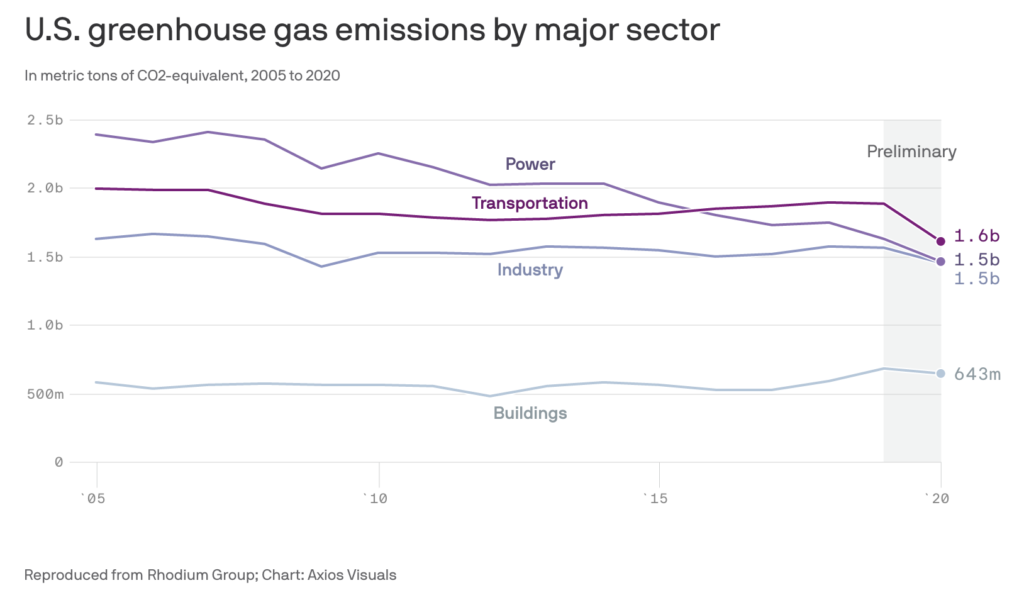
But while there’s good news in this pandemic bike boom, there’s also been a more troubling trend: Along with the rise in the number of cyclists in New York City’s bike boom, there was a corresponding rise in the number of bicycling traffic injuries. In just one week last March, there was a 43% increase in the number of bicycling injuries in New York City, with the New York Police Department reporting that the usual suspects—driver inattention and failure to yield—were responsible for the rise in injuries.
Not surprising.
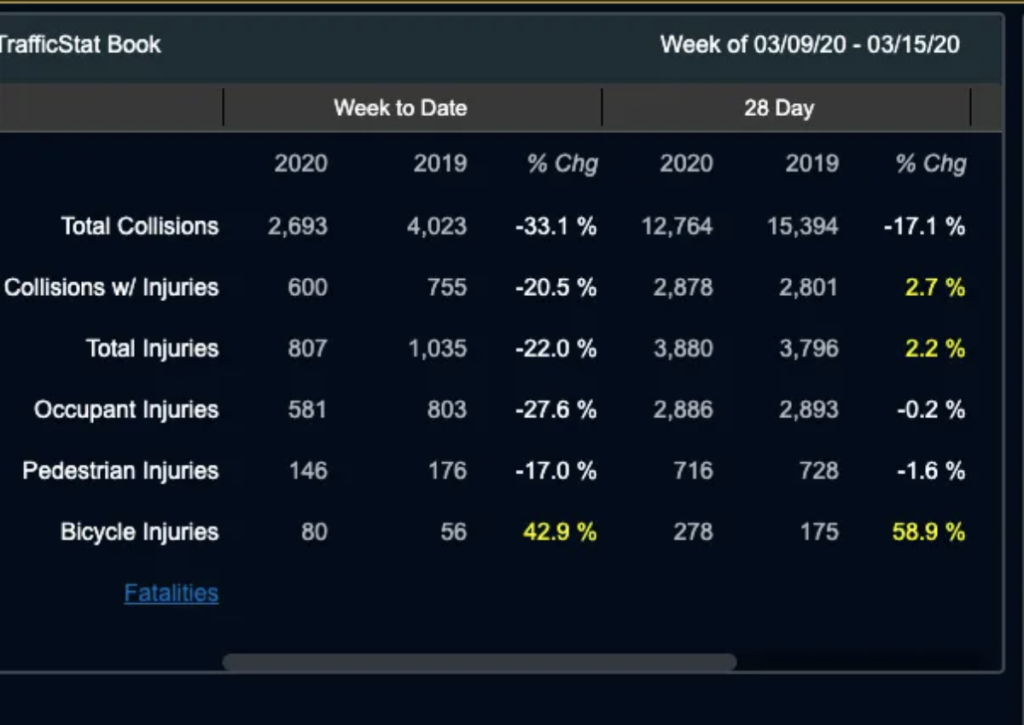
All injuries have gone down except bike injuries from March 9 to March 15. Photo: NYPD
And totally preventable, because we already know how to make bicycling safe for everybody from 8 to 80. But unlike those countries that have already made bicycling safe for everybody from 8 to 80, we haven’t made a serious effort to make our roads safer for anybody.
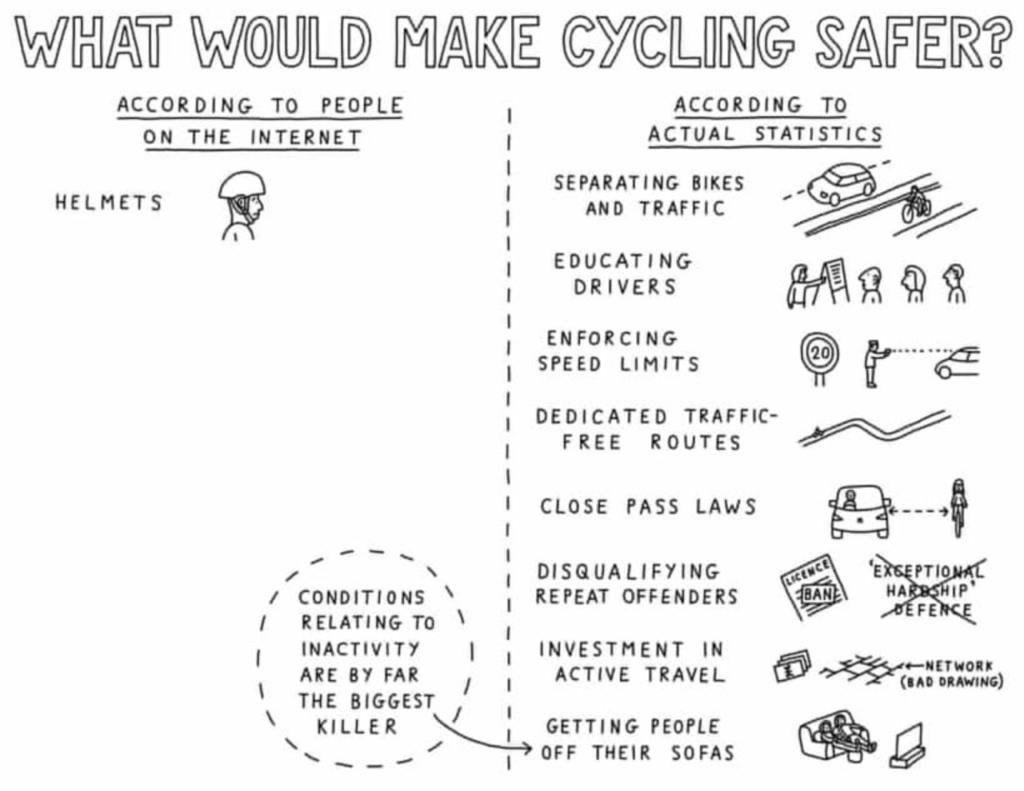
New York wasn’t the only city seeing a drop in automobile traffic and a rise in bicycle traffic. The Covid Bike Boom has been a worldwide phenomenon. Here in San Francisco, we saw an estimated 60% drop in automobile traffic at the beginning of the stay at home order, but by summer, traffic had rebounded back to pre-lockdown levels. And with that rebound came a corresponding rise in “vulnerable user” traffic fatalities.
Which means that as cyclists, we have to take precautions to keep ourselves safe. Not because the law requires us to take extraordinary measure to protect ourselves, but because drivers aren’t observing even the ordinary level of care the law requires of them.
Fortunately, there’s a lot you can do to protect yourself while riding your bike, both before your ride, and during your ride.
Your first and best choice will always be to avoid bicycle accidents before they happen, because no amount of money can take the place of your good health.
- Related Article: Why We Say “Bicycle Accidents” Are Not Accidents
However, while accidents do happen, bicycling is not a risky activity, and the risks of injury that do exist can be substantially reduced by understanding what those risks are, and how to avoid them.
Observe the Traffic Laws
No judgment, just the facts. Still, this may not be popular advice for some. Cyclists have a reputation as scofflaws who regularly flout the laws. The reality, however, is that what many non-cyclists perceive as “law-breaking” by cyclists is actually law-abiding behavior. And while it’s true that some cyclists do break the law, it’s not true that they all break the law all the time. In fact, cyclists obey the law 88% of the time during daylight hours, and 87% of the time during evening hours. In contrast, motorists break more laws more often. And yet cyclists get singled out for special scorn as “scofflaws,” and may not appreciate unsolicited “obey the law” advice from self-righteous lawbreakers perched on their mobile, motorized couches.
- Related Article: Confronting the Scofflaw Cyclist
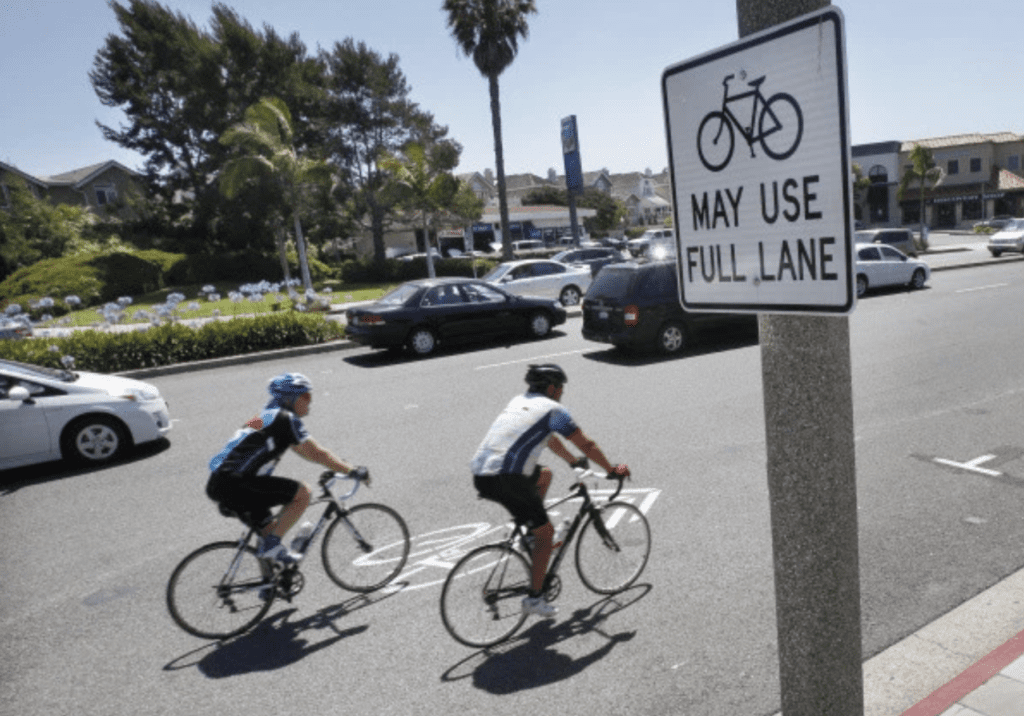
Further complicating things, new cyclists may begin their bicycling adventure believing this myth that cyclists are scofflaws, and may believe that riding a bike means unfettered freedom to disregard the laws with impunity. However, the fact is that cyclists have a legal right to the road, and with that legal right cyclists also have a legal duty to obey the laws of the road.
But regardless of whether you’re a longtime bicyclist who resents “obey the law” haranguing, or a beginner who mistakenly believes that the laws don’t apply to bicyclists, the starting point for protecting yourself on the road will be to obey the law.
There are two reasons you should ride lawfully. First, the traffic laws are a common set of rules that tell everybody on the road what to expect from each other. When you ride lawfully, your behavior is predictable to others, and your chances of being involved in a collision are reduced. And that’s the entire point of traffic laws—to prevent collisions before they happen. Riding predictably is the other side of being able to predict how drivers (and increasingly, other cyclists) will behave around you. When you can predict the behavior of other road users, you can often avoid a dangerous situation.
Second, when you obey the traffic laws, you are protecting your legal rights in case you are involved in a collision. Riding in violation of the traffic laws is usually considered negligence if your violation of the law contributes to a collision. And if you were riding negligently and a collision results, your own negligence will almost always reduce what would otherwise be your fair compensation, even if the driver who hit you was also negligent. In fact, in some states, if you are even 1% negligent, you may not be able to recover any damages for your injuries. Therefore, because the consequences affecting your legal rights can be so severe, your first line of defense in protecting yourself will always be to observe the traffic laws.
Ride With “Situational Awareness”
Situational awareness means that you are aware of what is happening around you. What are drivers doing? What are other cyclists doing? What are pedestrians doing? What are the road surface conditions? Are there railroad tracks up ahead? What traffic control devices are up ahead? Is the sun blinding drivers’ eyes ahead of you or behind you? These are examples of the kinds of conditions you should be aware of when riding your bike.
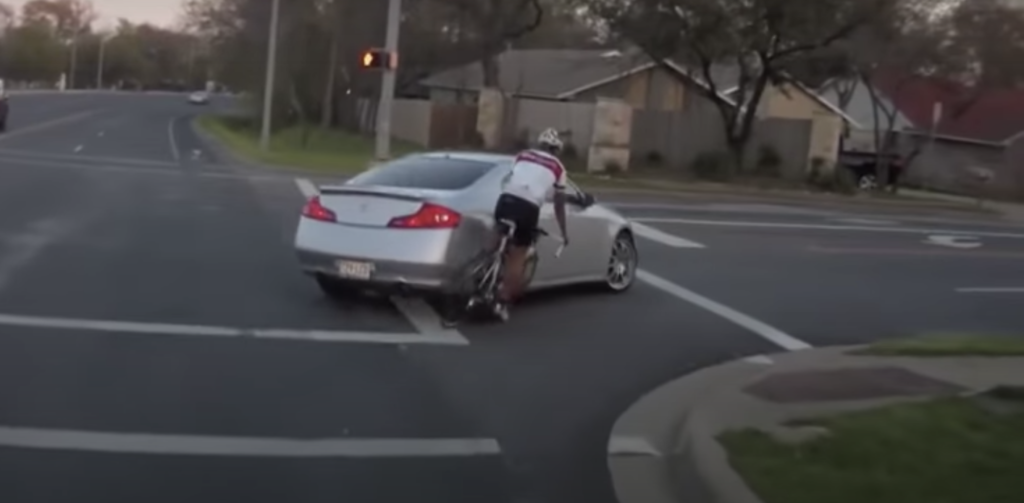
The bottom line: simply paying attention to your surroundings may make the difference between having an accident, and getting home safely.
For further important reading about situational awareness and avoiding specific, well-known driver hazards, see:
- Related Article: Riding With Situational Awareness
For further reading about emergency maneuvers every cyclist should know, see:
- Related Article: Emergency Maneuvers Every Bicyclist Should Know
For further reading about being aware when drivers can’t see you because the sun is in their eyes, see:
- Related Article: Lost In The Glare
- Related Article: Blinded By The Light
This is one of the most important steps you can take to protect yourself on a ride. In fact, it’s so important, it was also included in part 1 of this article. In a nutshell, here’s what you need to know:
- There’s a 7:1 size differential between cars and bicycles. This means that drivers can see other drivers easier than they can see you. Nevertheless, drivers do have a legal obligation to keep a proper lookout for you, and to exercise due care to avoid hitting you (you have the same obligation to drivers, by the way). However, the reality is that many drivers don’t observe their legal duties with the care the law requires. The result is that often drivers just don’t see cyclists on the road. In fact, that is the number one excuse drivers make when they collide with a cyclist– “I didn’t see him.”
- To help drivers see you, you should enhance your own “conspicuity”– the ability to be seen. This will help you significantly reduce the likelihood of collision with an inattentive driver. If you are riding at night, or in other low light conditions, such as fog or heavy rain or snow, the law requires you to equip your bike with a light and reflectors, and failure to do so would be evidence of your own negligence in a collision. However, although you’re not legally required to ride with lights during daylight hours, you can also enhance your conspicuity by riding with lights during daylight hours as well– something that experienced motorcyclists have known for years.
- Additionally, solid scientific data indicates that brightly-colored clothing, particularly fluorescent yellow-green and fluorescent orange, increases the distance at which drivers first perceive a cyclist from 400 feet to 2,200 feet in daylight, and from 150 feet to 560 feet at night. Reflective material increases the driver’s nighttime perception distance even more dramatically, from 150 feet to 2,200 feet. The increased perception distance attained through enhanced conspicuity gives drivers more time to react to the cyclist’s presence on the road, and thus, to reduce the likelihood of collisions in which visibility is a factor.

For further important reading about helping drivers see you, see:
- Related Article: Stay Seen, Stay Safe
Summary
In Part 1 of this article, we looked at how to protect yourself and your bike before you ride. In Part 2 (this article), we looked at how to protect yourself while on your ride. In the next article (Part 3), we will look at what happens if you are injured despite your best efforts to stay safe.
***
Bicycling is a very safe and healthy activity, and with appropriate precautions and attention to your safety, bicycling is even safer. Nevertheless, no sporting activity is ever completely safe. Despite your best efforts, there will always be some small possibility of injury. Regardless of whether a bicycle accident is a solo accident, or involves a collision with an automobile, or a defective cycling product, the accident is usually the result of somebody’s negligence– the driver’s negligence, the cyclist’s negligence, both the driver and the cyclist, or the local government responsible for the condition of the roads and trails.
If the negligent party in that crash is the driver, (or the government agency responsible for the roads, or even the manufacturer of a defective bicycle product), the cyclist has a legal right to be compensated for his or her injuries.
If you have been injured Contact bicyclelaw.com or another personal injury attorney who understands bicycling. While many attorneys are competent to handle general injury cases, make sure your attorney has experience and is familiar with:
- Bicycle traffic laws
- Negotiating bicycle accident cases with insurance companies
- Trying bicycle accident cases in court
- The prevailing prejudice against cyclists by motorists and juries
- The names and functions of all bicycle components
- The speed bikes travel as well as braking and cornering
- Bicycle handling skills, techniques, and customs
- How to get the full replacement value property damage estimates for your bicycle
- Establishing the value of lost riding time
- Leading bicycle accident reconstruction experts
- Licensed forensic bicycle engineers
- Establishing the value of permanent diminished riding ability
If you have been injured in a bicycle accident, whether in a solo accident that may be the result of another party’s negligence, or in a collision with another person, contact bicyclelaw.com for a free consultation with bicycle attorney Bob Mionske. Our Portland, Oregon Office is The Law Offices of Bob Mionske. Bicycle Law’s California office is at Coopers LLP. Given his extensive expertise and contacts in the national bicycling community, Bob is happy to speak with you wherever you are located. If appropriate, he will associate local counsel on matters.
If you want to speak to us about a crash, your rights, or an advocacy matter, please call (866) 835-6529 or email info@bicyclelaw.com.
***
For more information:
For information about protecting yourself with insurance, see Insurance Advice.
For more in-depth information about accidents and insurance, see Bicycling & the Law.
For information on avoiding accidents before they occur, see How to Avoid Car-On-Bike Accidents.
***
As urban density increases and renewed interest in cycling reaches unprecedented levels, it is an exciting time for bicycling in the United States. In many places though, the laws and the road access for cyclists have not kept up. Conflicts occur between bicyclists and motorists.
Regardless of the cause of a crash, the outcome tends to be worse for the cyclist than the car. Bicycle Law was founded by Bob Mionske with one goal: to help cyclists. Given Bob’s unique professional cycling background crossed over with his lawyering, he is regularly approached by attorneys (and cyclists directly) for input on bicycle collisions. Cause, effect, and liability.
If you want to speak to us about a crash, your rights, or an advocacy matter, please call (866) 835-6529 or email info@bicyclelaw.com.

